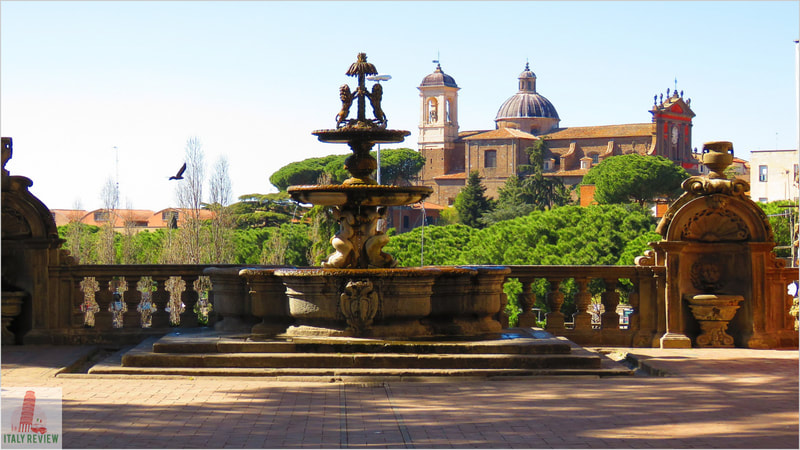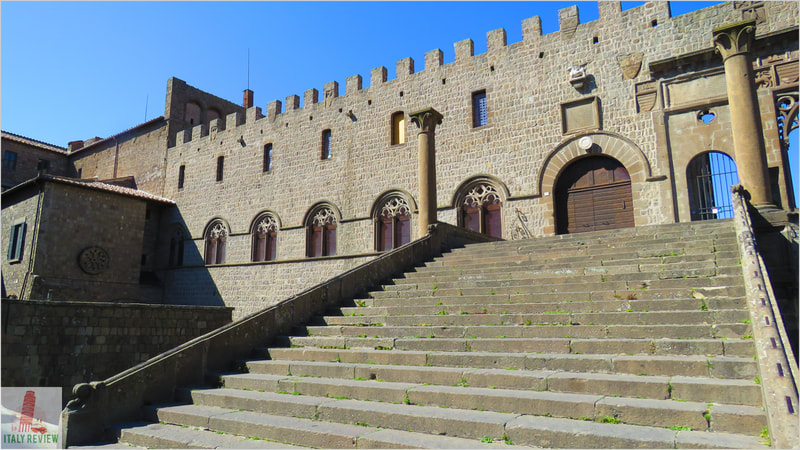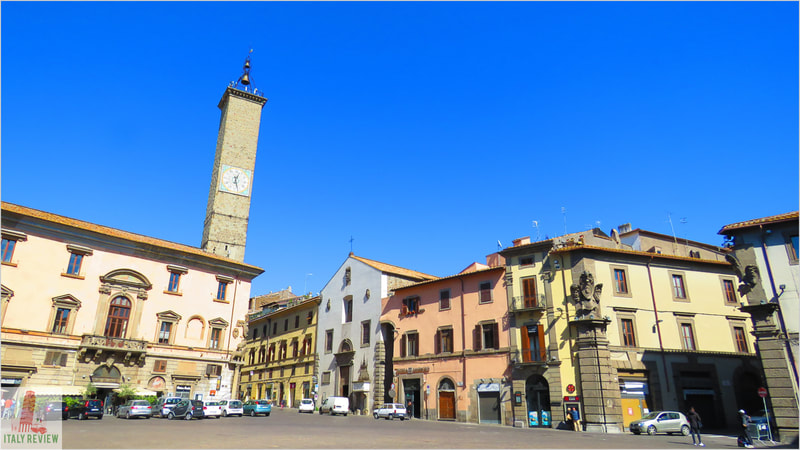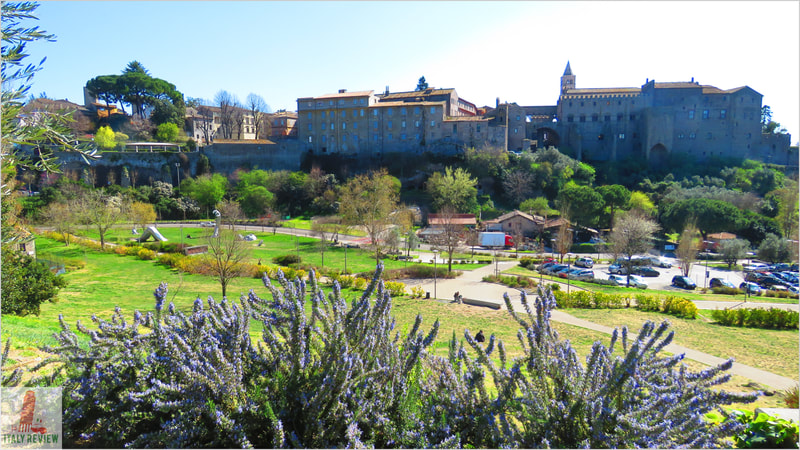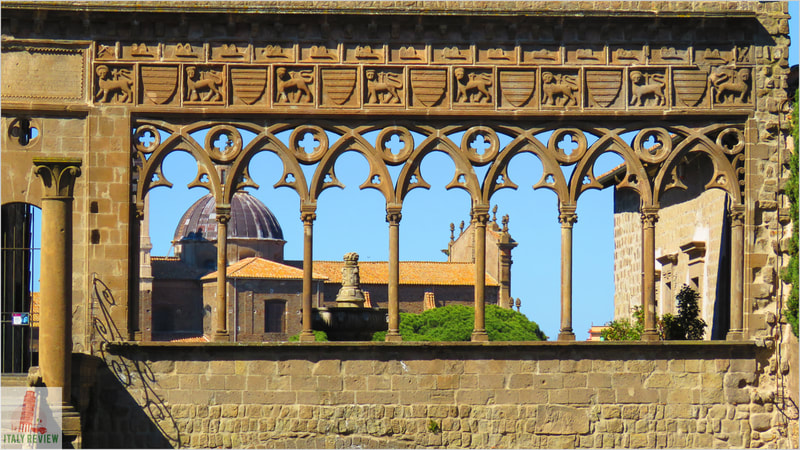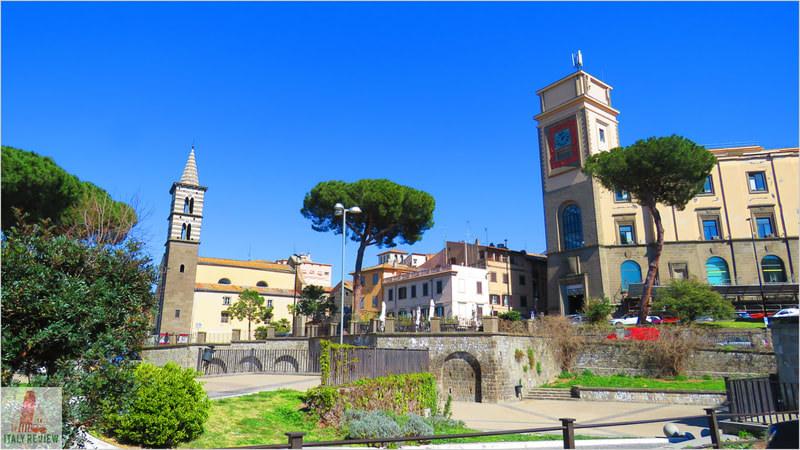Viterbo
|
By Dion Protani
|
Latest update: 7 January 2024
|
|
With its mixture of medieval piazzas and Renaissance palazzi, the city of Viterbo offers its visitors a captivating mixture of elegance, charm and history.
The capital of Viterbo Province, it's one of the most important and populous cities in the Lazio region with just under 70,000 permanent residents. Viterbo lies just a short distance from the border with Tuscany to the north and Umbria to the east while a two hour train ride south makes it within range of day-trips from Rome. |
The centre of attention for most visitors to Viterbo is the area around Piazza del Plebiscito which is in essence, its centre. The attractive square is surrounded by buildings of the medieval and Renaissance period and perhaps most people's first port of call is the Palazzo dei Priori with its free-to-enter courtyard from where you can gaze across to another of the city's most prominent landmarks, the Chiesa della Santissima Trinità.
Proceeding from the Piazza del Plebiscito the next place to visit is the area around the Cattedrale di San Lorenzo, the city's cathedral (actually in most Italian cities the cathedral is colloquially referred to as the "duomo"), where you'll also find the impressive Palazzo dei Papi. For a short period in Viterbo's history it was the seat of the pope and several popes were elected in this building. In fact Viterbo is sometimes referred to as the "City of Popes" with this phase of its history in mind.
When planning a trip to Viterbo you could also consider visiting some of its intriguing neighbours such as the Etruscan town of Tuscania (around 25 minutes by car), the fascinating old town of Tarquinia with its archaeological site (around 45 minutes) or the beguiling Cività di Bagnoregio (around 35 minutes).
Proceeding from the Piazza del Plebiscito the next place to visit is the area around the Cattedrale di San Lorenzo, the city's cathedral (actually in most Italian cities the cathedral is colloquially referred to as the "duomo"), where you'll also find the impressive Palazzo dei Papi. For a short period in Viterbo's history it was the seat of the pope and several popes were elected in this building. In fact Viterbo is sometimes referred to as the "City of Popes" with this phase of its history in mind.
When planning a trip to Viterbo you could also consider visiting some of its intriguing neighbours such as the Etruscan town of Tuscania (around 25 minutes by car), the fascinating old town of Tarquinia with its archaeological site (around 45 minutes) or the beguiling Cività di Bagnoregio (around 35 minutes).
Related links
Profile
Nestled in the rolling hills of the Lazio region in central Italy, Viterbo is a charming medieval town that offers a captivating blend of history, culture, and natural beauty. Known for its well-preserved historic center, natural hot springs, and rich cultural heritage, Viterbo is a hidden gem awaiting exploration by travelers seeking an authentic Italian experience.
History
Viterbo boasts a rich history dating back to the Etruscan period. However, it reached its peak of influence during the Middle Ages when it served as the papal seat from 1257 to 1281 during the reign of Pope Alexander IV. The town's historic center is a testament to this period, featuring well-preserved medieval architecture, palaces, and churches.
Highlights
- Medieval Charm: Explore Viterbo's well-preserved medieval district, where you'll find winding cobblestone streets, picturesque piazzas, and impressive stone buildings. The Papal Palace, built in the 13th century, is a highlight with its beautiful Gothic architecture.
- Hot Springs: Viterbo is renowned for its natural hot springs, known locally as "terme." Visit the Terme dei Papi (Baths of the Popes), a complex of thermal pools and wellness centers, for a rejuvenating soak in the mineral-rich waters.
- Religious Heritage: The town is home to numerous historic churches, including the Cathedral of San Lorenzo and the Church of Santa Maria Nuova. Don't miss the annual Feast of Saint Rosa, a vibrant religious procession held in September.
- Cultural Events: Viterbo hosts a variety of cultural events throughout the year, including music festivals, art exhibitions, and historical reenactments. Check the local calendar to see if any events coincide with your visit.
- Local Cuisine: Enjoy traditional Lazio cuisine at local trattorias and restaurants. Taste regional dishes such as "gnocchi alla romana" (semolina dumplings) and "porchetta" (roast pork) accompanied by excellent local wines.
Visitor information
- Location: Viterbo is located in the Lazio region of central Italy, approximately 100 kilometers (62 miles) north of Rome.
- Access: The nearest major airport is Leonardo da Vinci-Fiumicino Airport (FCO) in Rome. From Rome, you can reach Viterbo by train or bus. The journey takes around 1.5 to 2 hours. Alternatively, you can rent a car and explore the picturesque countryside at your own pace.
- Accommodation: Viterbo offers a range of accommodation options, including hotels, guesthouses, and bed-and-breakfasts. Staying within the historic center allows easy access to the town's attractions.
- Best Time to Visit: The best time to visit Viterbo is during the spring and autumn when the weather is mild, and outdoor activities are pleasant. Summers can be hot, and winters can be chilly, so plan your visit accordingly.
- Local Tips: Viterbo is known for its medieval festivals, so if you're interested in experiencing one, consider visiting in July during the "Festa di Santa Rosa," which features a spectacular illuminated tower procession.
Comune di Viterbo
|
Elevation: 326 metres
Top sights: Palazzo dei Priori, Palazzo dei Papi, Duomo/Cathedral Recommended hotel: Alla Corte delle Terme Resort Close by: Tuscania, Tarquinia, Bolsena, Cività di Bagnoregio |
Viterbo Travel
Most people that visit Viterbo fly into Rome with its two international airports of Ciampino and Fiumicino but another alternative is to fly into Perugia in Umbria.
However, unless you're driving, the transport links from Rome are much more effective compared to Perugia. From Rome city centre to Viterbo there are regular trains and a journey time of around 2 hours. Buses are in operation around the city but you can reach the main sights easily on foot.
However, unless you're driving, the transport links from Rome are much more effective compared to Perugia. From Rome city centre to Viterbo there are regular trains and a journey time of around 2 hours. Buses are in operation around the city but you can reach the main sights easily on foot.
|
Public transport: Buses, mainline train station
By car: Civitavecchia - 51 mins (58 km), Rome - 1 hr 25' (104 km) |
Fly to: Rome Ciampino - (97 km), Rome Fiumicino - (102 km)
Main train station: Viterbo Porta Romana (1 km from centre) |

